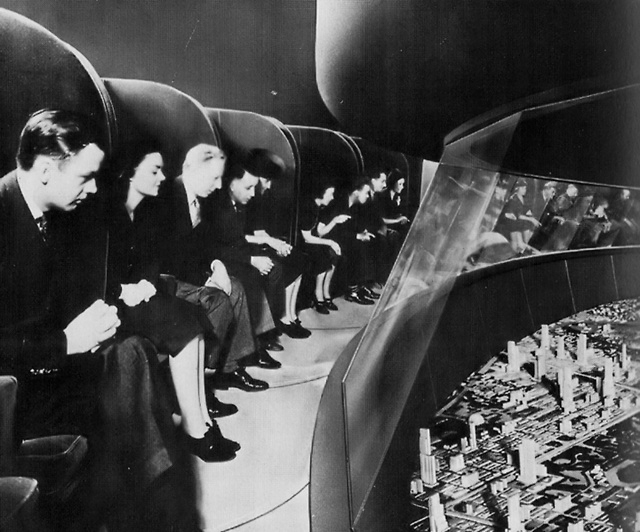In Jared Lindzon’s Impact Lab piece which predicts that the average travel speed for human transport by 2030 will be at or near 250mph (I’ll take the under), the author looks at “Re-Programming Mobility,” a report by NYU Rudin Center for Transportation Policy research scientist Anthony Townsend, which imagines a quartet of extreme traffic scenarios being realized in the next 15 years. An excerpt:
“In his report Townsend takes an in depth look at four possible outcomes in four specific locations, though he says that they’re meant to serve as a representation of the country as a whole. In his report he outlines concerns over government partnerships with private companies, and considers how those agreements could play out over the long haul.
The first scenario takes place in Atlanta, where a near-bankrupt municipal government of the future is unable to afford repairs to its crumbling infrastructure, so it enters a partnership with Google.
‘The idea there is that Google does get to implement its vision of driverless cars, and does so in part with the state government in Georgia,’ said Townsend. ‘You get a whole lot of land use impacts from them, hyper urban sprawl, neighborhoods that aren’t connected to this network and get left behind, and then you get a lot of difficult questions around the role of a single company having so much control over infrastructure.’
The second scenario considers a dystopian future for Los Angeles, where self-driving cars are forced to share the roads with manually driven vehicles, creating unsafe and unpredictable roadways.
‘It’s not a world where we all have these identical perfect pod cars — you have no idea what to expect from other drivers,’ he said. ‘On top of that you’re basically doubling the number of cars, because all of a sudden kids and senior citizens and visually impaired people are going to be buying cars for the first time, so it’s a world of messy transition, and the L.A. region basically becomes unlivable.’
The third scenario takes place in New Jersey, where global warming has caused a series of brutal winters and severe weather patterns, which in turn put a strain on road maintenance. Once the city exhausts its resources, it calls upon the state to help rebuild the transit system.
‘They build a network of high speed, electronically hailed busses and rapid transit,’ said Townsend. ‘So you’ve basically got busses running at 6-inches of separation through the Lincoln Tunnel to make up for the real capacity they never built.’
The fourth and final scenario imagined by Townsend and his team considers the future of transportation in Boston, where smart transit systems and electric bikes help support a city of students living in high-density single-person apartments, while sharing transit routes with freight vehicles leaving the harbor.
‘Most shipping companies can’t keep up with the volume, but you’ve also seen Amazon and Google and EBay getting into same-day delivery, so you can imagine what might happen in the extreme is that they would start forcing all the freight to be delivered at night,’ he said. ‘So the city would be for people during the daytime and robots at night.’”



